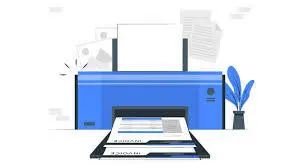Sending electronic patient statements
- Ronald Roberts
- Jul 8, 2024
- 3 min read
In the digital age, healthcare providers are increasingly turning to electronic patient statements to enhance efficiency and improve patient satisfaction. Electronic patient statements offer a modern solution to the traditional paper billing process, providing numerous benefits for both healthcare providers and patients. This article will explore the advantages, implementation process, and best practices for sending electronic patient statements.
Benefits of Electronic Patient Statements
Cost Savings
Reduced Printing and Mailing Costs: Electronic statements eliminate the need for paper, printing supplies, and postage, leading to significant cost savings.
Administrative Efficiency: Automating the billing process reduces the time and labor required for manual handling of statements, allowing staff to focus on other important tasks.
Improved Patient Experience
Convenience: Patients can access their statements online at any time, from any location, making it easier for them to manage their healthcare finances.
Timeliness: Electronic delivery ensures that patients receive their statements promptly, reducing the delay associated with postal mail.
Environmental Impact
Paperless Solution: By reducing paper usage, electronic patient statements contribute to environmental sustainability.
Lower Carbon Footprint: Decreasing the need for physical mail delivery helps reduce the carbon footprint associated with transportation.
Implementation of Electronic Patient Statements
Choosing the Right Software
Features: Look for software that offers secure electronic delivery, user-friendly interfaces, and integration with existing healthcare management systems.
Compliance: Ensure the software complies with relevant regulations, such as HIPAA, to protect patient information.
Data Integration
Seamless Integration: Integrate electronic statement software with the existing electronic health record (EHR) and practice management systems for streamlined data flow.
Data Accuracy: Maintain accurate and up-to-date patient information to ensure statements are sent to the correct recipients.
Security Measures
Encryption: Use encryption to protect sensitive patient data during transmission and storage.
Access Controls: Implement robust access controls to ensure only authorized personnel can access patient statements.
Patient Communication
Notification: Notify patients about the transition to electronic statements and provide clear instructions on how to access their statements online.
Support: Offer customer support to assist patients with any issues or questions regarding their electronic statements.
Best Practices for Sending Electronic Patient Statements
Clear and Concise Statements
Easy to Understand: Ensure statements are easy to read and understand, with clear explanations of charges and payment options.
Itemized Billing: Provide detailed itemized billing to help patients understand the services they are being charged for.
Payment Options
Multiple Payment Methods: Offer various payment options, including online payments, credit card payments, and electronic funds transfer (EFT), to accommodate patient preferences.
Payment Plans: Provide flexible payment plans for patients who may have difficulty paying their bill in full.
Timely Delivery
Regular Billing Cycles: Establish regular billing cycles to ensure patients receive their statements consistently.
Reminder Notifications: Send reminder notifications to patients about upcoming payments or outstanding balances to encourage timely payments.
Patient Feedback
Surveys: Conduct surveys to gather feedback from patients about their experience with electronic statements and identify areas for improvement.
Continuous Improvement: Use patient feedback to continuously improve the electronic statement process and enhance patient satisfaction.
Conclusion
Sending electronic patient statements is a forward-thinking approach that offers numerous benefits for healthcare providers and patients alike. By reducing costs, improving patient experience, and promoting environmental sustainability, electronic patient statements represent a significant advancement in healthcare billing. Implementing this technology requires careful planning, secure data management, and clear communication with patients. By following best practices, healthcare providers can successfully transition to electronic patient statements and enjoy the advantages of a modernized billing system.
SITES WE SUPPORT




Comments